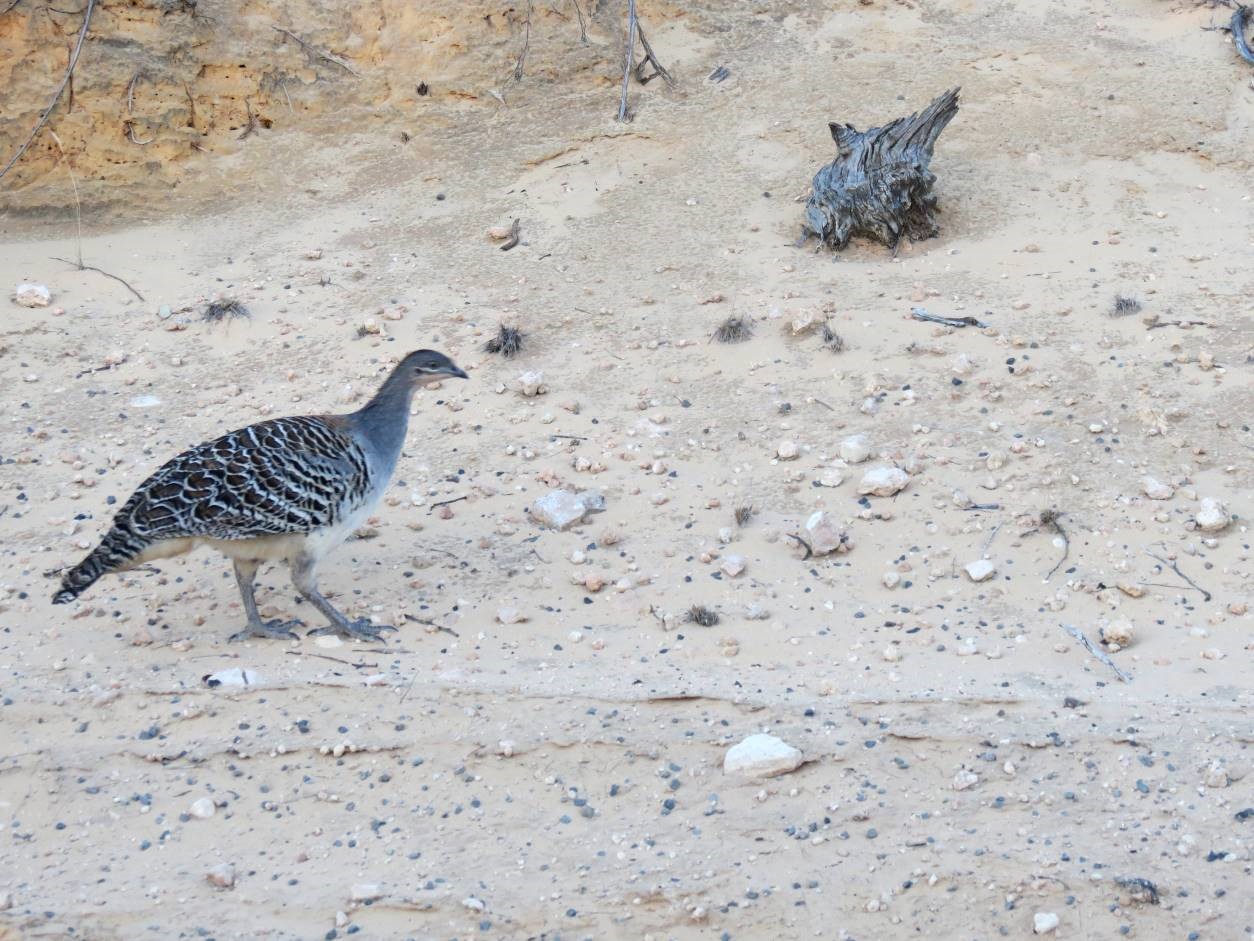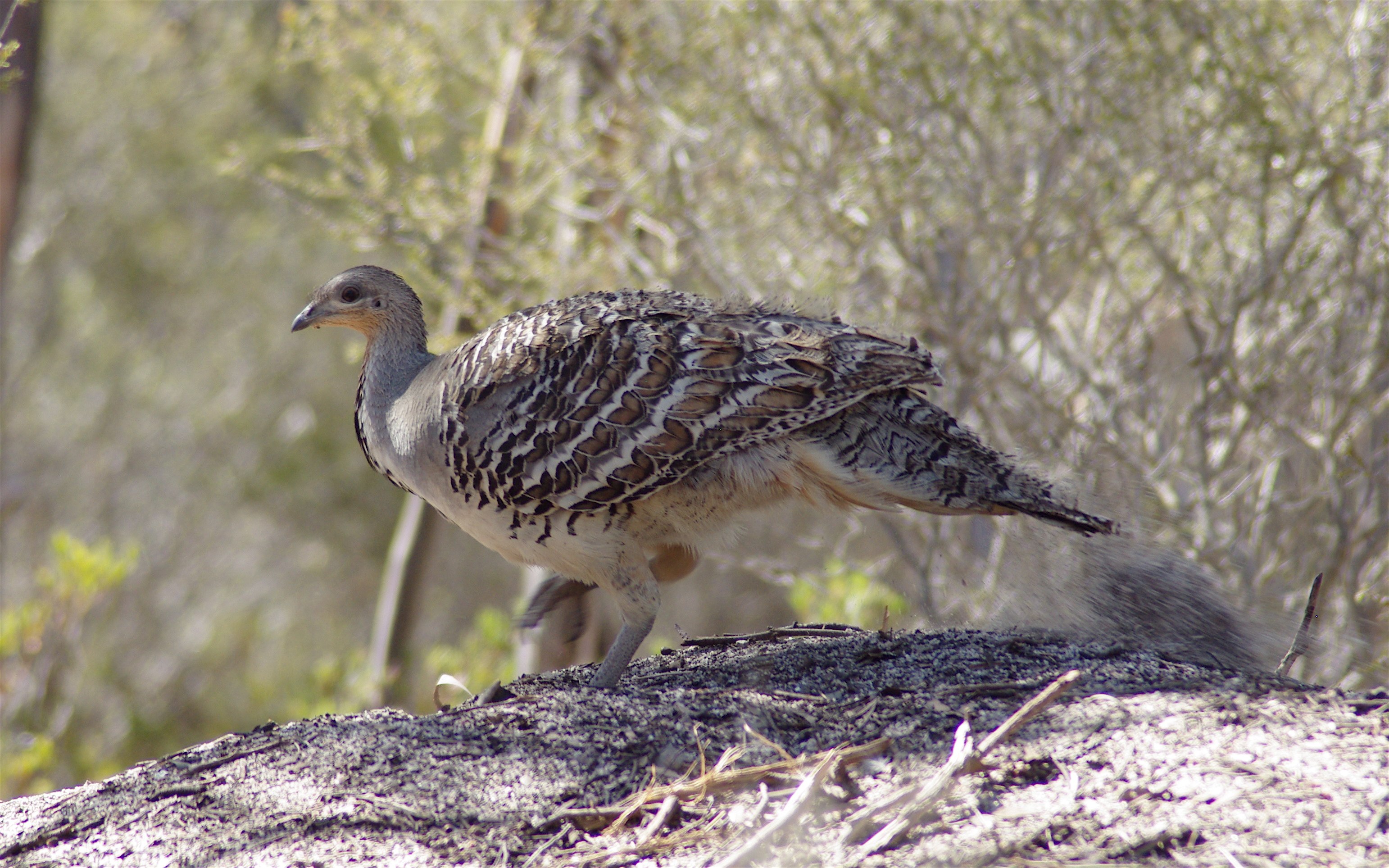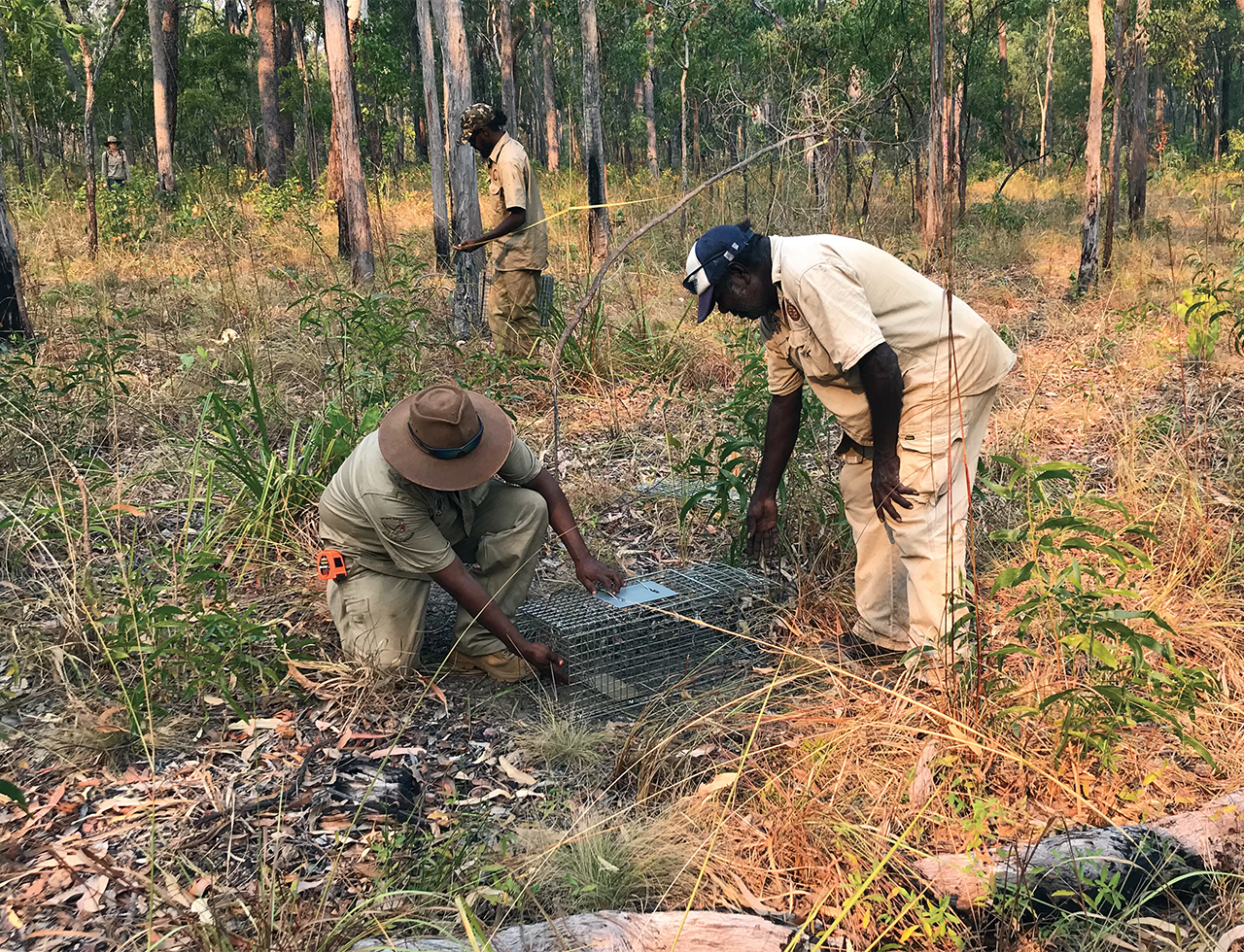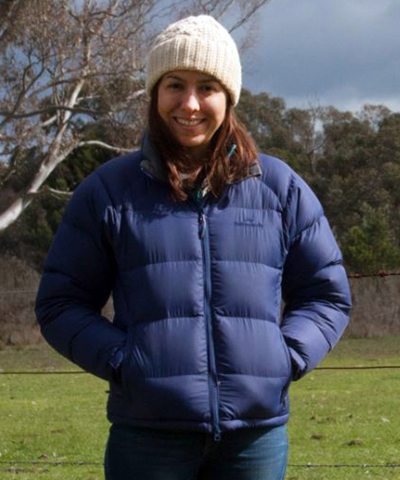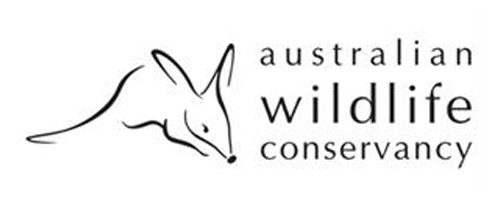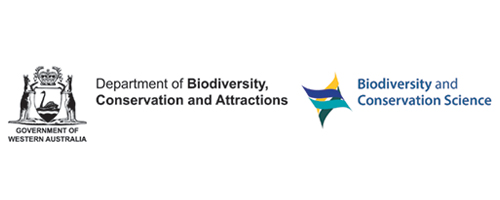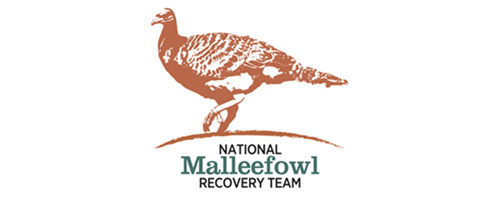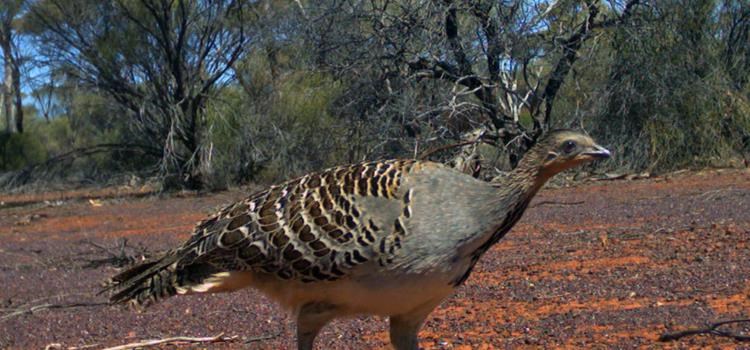
Project: 3.3.5
Recovering malleefowl with adaptive management of feral predators
Project Leaders: Brendan Wintle , Sarah Legge , Darren Southwell
Research in Brief
The distribution and abundance of malleefowl (Leipoa ocellata) has declined markedly since the arrival of Europeans in Australia. The main identified threats include habitat loss and fragmentation, herbivore grazing, changed fire regimes and invasive predators.
Predator control for foxes and cats is the most common management strategy to conserve the species, yet it is probably the most expensive and the benefits are unclear. This project aims to better understand the effectiveness of predator control for malleefowl by monitoring malleefowl breeding activity and predator activity at adaptive management sites set up across southern Australia. This research addresses a National Recovery Plan action.
Why is the research needed?
Malleefowl are found in semi-arid to arid shrublands and low woodlands, especially those dominated by mallee and/or acacias. They are a much-loved ground-dwelling bird and an ecosystem engineer, renowned for the large mounds that they build to incubate their eggs.
The species is listed as threatened, Endangered or Critically Endangered in all states of Australia in which they occur, as well as Vulnerable nationally under the EPBC Act. They have undergone a sustained decline in numbers and overall range.
Introduced predators such as cats and foxes are believed to be having a significant impact on remaining populations, by killing adults, while foxes also dig up nests to eat the eggs. While controlling these predators is the most common management strategy it is very expensive to implement in the remote arid landscapes in which the malleefowl occurs. More worryingly, the benefits of various methods of predator control for malleefowl recovery are unclear. 
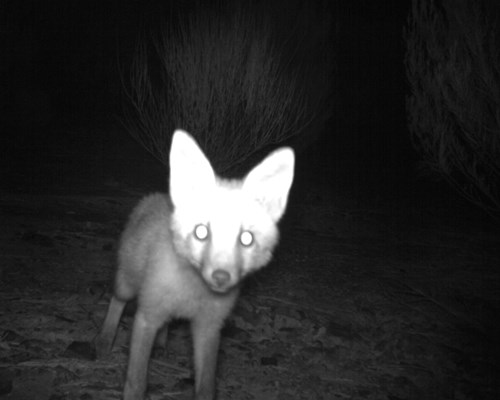
A red fox image caught by a camera trap during monitoring. Photo: Jennifer Jackson, Department of Biopersity, Conservation and Attractions, Western Australia
How will the research help?
This project aims to better understand the effect of predator control in malleefowl habitat on both predator activity and malleefowl persistence. The research is being conducted as an experiment within an adaptive management framework. This will allow managers to trial practical on-ground techniques to learn about the effectiveness of predator control while continuing management to aid the recovery of malleefowl.
The adaptive management framework is primarily designed to look at predator control methods, but we will also have the ability to investigate the benefits of other types of management actions, such as altering fire regimes or controlling herbivores. This will ensure that future resources are directed to effective conservation action. Although adaptive management is advocated in the conservation literature, this project represents one of very few examples of this methodology successfully being implemented in practice, especially at a landscape-scale.
We expect that because of the broad partnerships involved, the results of this project will be used in management strategies across the entire range of the malleefowl, and may also have benefits for predator control throughout southern Australia. Malleefowl share their habitat with numerous threatened species of mammals, birds, reptiles and plants that are also likely to benefit from conservation actions to benefit malleefowl.
What research activities are being undertaken?
Data on malleefowl breeding and predator activity are currently being collected from twelve sites, another nine adaptive management sites are expected to be up and running by late 2019. In total, monitoring will occur at up to 40 adaptive management sites set up across the species’ range.
Predators, such as foxes and cats, are being managed in and around treatment sites, while nearby control sites are left unmanaged so that the effect of predator control can be quantified. This paired control- treatment design maximises our chance to tease apart any effect of baiting from other environmental variables that might drive malleefowl breeding activity, such as rainfall.
Malleefowl mound activity, a proxy for the size of the breeding population, is monitored annually at our sites by government agencies, conservation organisations, mining staff and community volunteers. Motion- triggered cameras deployed at sites are also monitoring the effect of predator control on predator activity.
An ARC Linkage project between the University of Melbourne and Parks Australia (2012–15) laid the foundations for this project by identifying potential threats to malleefowl and providing the experimental design for the current project. A power analysis conducted during this planning stage suggested that 20 pairs of sites must be monitored for at least 5 years to detect small-to-moderate effects of predator control on malleefowl breeding activity.
Who is involved?
The project is being led by the University of Melbourne in close collaboration with the National Malleefowl Recovery Team, the Victorian Malleefowl Recovery Group and the Western Australian Malleefowl Recovery Group and almost 20 land management agencies in Western Australia, South Australia, Victoria and New South Wales.
Project partners include the Australia Wildlife Conservancy, Bush Heritage Australia, Office of Environment and Heritage NSW, Great Victorian Desert Trust, Department of Biopersity, Conservation and Attractions WA, Ninghan Station, Mount Gibson Iron Limited Extension Hill Operations, and Parks Victoria. Citizen scientists will undertake a large component of the monitoring and data processing.
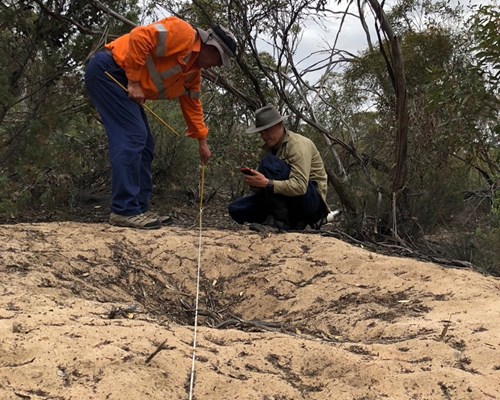
Recording monitoring data at a malleefowl mound. Photo: Alys Young, University of Melbourne
Where is the research happening?
Our adaptive management sites are located within Western Australia, South Australia, Victoria and New South Wales on a variety of land tenures including conservation reserves, mining leases, indigenous managed land and private property.
When is the research happening?
This project is running for over five years from 2015 to mid 2021.
Further information
For more information please contact:
Dr Darren Southwell - darren.southwell@unimelb.edu.au
Top image: Malleefowl image caught by camera trap during monitoring. Photo: Jennifer Jackson, Department of Biopersity, Conservation and Attractions, Western Australia
